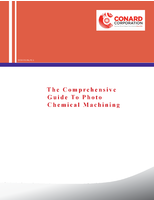ASTM Standard provides reference materials for kinetic parameters.
Press Release Summary:
Users of standards involving kinetic parameters need reference materials to qualify individual laboratories and to validate procedures and software. Developed by Subcommittee E27.02 on Thermal Stability and Condensed Phases, ASTM E2781 will provide such parameters to accommodate apparatus configurations and kinetic models. Kinetic parameters, such as activation energy and pre-exponential factor, are used to estimate lifetime of products and to assess thermal safety of high-energy chemicals.
Original Press Release:
Reference Materials for Kinetic Parameters Presented in New ASTM International Standard
W. CONSHOHOCKEN, Pa., - Users of standards involving kinetic parameters need reference materials to qualify individual laboratories and to validate procedures and software. A new ASTM International standard will provide such parameters to accommodate apparatus configurations and kinetic models.
ASTM E2781, Practice for Evaluation of Methods for Determination of Kinetic Parameters by Thermal Analysis, was developed by Subcommittee E27.02 on Thermal Stability and Condensed Phases, part of ASTM International Committee E27 on Hazard Potential of Chemicals.
"By definition, materials with kinetic properties change with temperature and time, so the development of a suitable standard reference material is not practical," says Roger Blaine, retired from TA Instruments and a longtime ASTM member. "The best that can be done is the selection, for fresh materials, of known kinetic parameters. The user may then compare the results obtained on their instrument or with their procedure to those accepted values."
Kinetic parameters (for example, activation energy, pre-exponential factor, reaction order) are used to estimate lifetime of products (ASTM E1877, Practice for Calculating Thermal Endurance of Materials from Thermogravimetric Decomposition Data) and to assess the thermal safety of high-energy chemicals (ASTM E1213, Test Method for Minimum Resolvable Temperature Difference for Thermal Imaging Systems).
Other ASTM standards for the determination of kinetic parameters include the following:
o ASTM E698, Test Method for Arrhenius Kinetic Constants for Thermally Unstable Materials Using Differential Scanning Calorimetry and the Flynn/Wall/Ozawa Method;
o ASTM E1641, Test Method for Decomposition Kinetics by Thermogravimetry;
o ASTM E2041, Method for Estimating Kinetic Parameters by Differential Scanning Calorimetry Using the Borchardt and Daniels Method; and
o ASTM E2070, Test Method for Kinetic Parameters by Differential Scanning Calorimetry Using Isothermal Methods.
Blaine says that ASTM E2781 can be used to select from the literature and to standardize the kinetic parameters for a series of materials that might be used for the evaluation of kinetic parameters. Developers of standards, procedures and tools for measurement of kinetic parameters will be the primary users of the standard. Users will include regulatory agencies, safety specialists interested in the storage and transportation of high energy materials, safety testing instrument manufacturers and safety software developers.
To purchase ASTM standards, visit www.astm.org and search by the standard designation number, or contact ASTM Customer Relations (phone: 610-832-9585; service@astm.org). ASTM International welcomes and encourages participation in the development of its standards. For more information on becoming an ASTM member, visit www.astm.org/JOIN.
ASTM International is one of the largest international standards development and delivery systems in the world. ASTM International meets the World Trade Organization (WTO) principles for the development of international standards: coherence, consensus, development dimension, effectiveness, impartiality, openness, relevance and transparency. ASTM standards are accepted and used in research and development, product testing, quality systems and commercial transactions.
View this release on the ASTM Web site at www.astmnewsroom.org.
ASTM Committee E27 Next Meeting: Nov. 15-17, November Committee Week, Tampa, Fla.
Technical Contact: Roger Blaine, Corvallis, Ore., Phone: 302-559-6827; roger.l.blaine@gmail.com
ASTM Staff Contact: Scott Orthey, Phone: 610-832-9730; sorthey@astm.org
ASTM PR Contact: Barbara Schindler, Phone: 610-832-9603; bschindl@astm.org




